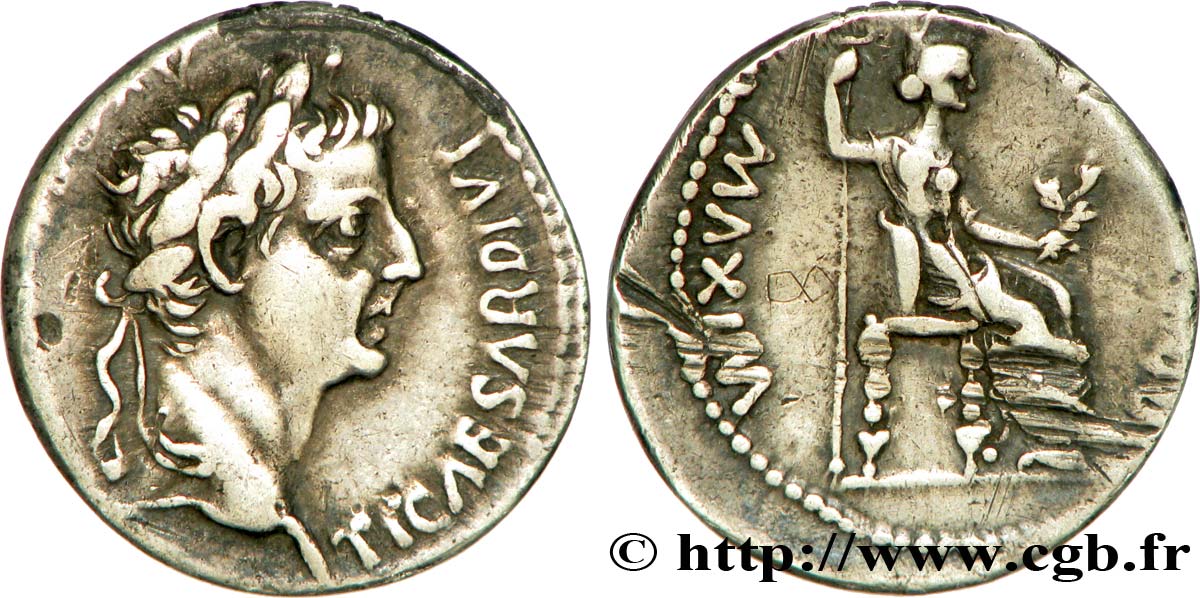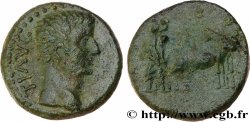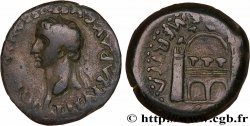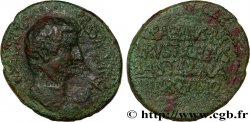v38_0460 - TIBERIO Denier
MONNAIES 38 (2009)
Prezzo di inizio : 145.00 €
Valutazione : 250.00 €
Prezzo realizzato : 145.00 €
Prezzo di inizio : 145.00 €
Valutazione : 250.00 €
Prezzo realizzato : 145.00 €
Tipo : Denier
Data: c. 22-30
Nome della officina / città: Gaule, Lyon
Metallo : argento
Titolo in millesimi : 900 ‰
Diametro : 18 mm
Asse di coniazione : 12 h.
Peso : 3,28 g.
Emission: 3e
Commenti sullo stato di conservazione:
Exemplaire sur un petit flan, légèrement décentré sur les légendes des deux côtés. Beau portrait. Un coup au revers sur les jambes de Pax. Jolie patine de collection ancienne
N° nelle opere di riferimento :
Diritto
Titolatura diritto : TI CAESAR DIVI - [AVG F AVGVSTVS].
Descrittivo diritto : Tête laurée de Tibère à droite (O*).
Traduzione diritto : “Tiberius Cæsar Divi Augusti Filius Augustus”, (Tibère César fils du divin Auguste, auguste).
Rovescio
Titolatura rovescio : PO[NTIF] - MAXIM.
Descrittivo rovescio : Pax (la Paix) ou Livie assise à droite sur un siège décoré, le pieds reposant sur un tabouret, tenant une branche d'olivier de la main gauche et de la droite une haste renversée.
Traduzione rovescio : “Pontifex Maximus”, (Grand pontife).
Commento
Poids léger. Rubans de type 3. Comme pour le denier d'Auguste, cette pièce appartient à l'atelier impérial de Lyon et ce type de denier a circulé pendant pratiquement un siècle. Il se rencontre très souvent avec des monnaies gauloises de la phase terminale dans les fouilles archéologiques. C’est la monnaie romaine la plus courante en Gaule pour les Julio-Claudiens. La quatrième émission se caractérise par un socle représenté par une ligne et les pieds du siège sont ornementés au revers ; au droit, les rubans de la couronne sont divergents.
Lightweight. Type 3 ribbons. As with the Augustan denarius, this coin belongs to the imperial mint of Lyon and this type of denarius circulated for almost a century. It is very often found with Gallic coins from the late phase in archaeological excavations. It is the most common Roman coin in Gaul for the Julio-Claudians. The fourth issue is characterized by a base represented by a line and the feet of the seat are ornamented on the reverse; on the obverse, the ribbons of the crown are divergent
Lightweight. Type 3 ribbons. As with the Augustan denarius, this coin belongs to the imperial mint of Lyon and this type of denarius circulated for almost a century. It is very often found with Gallic coins from the late phase in archaeological excavations. It is the most common Roman coin in Gaul for the Julio-Claudians. The fourth issue is characterized by a base represented by a line and the feet of the seat are ornamented on the reverse; on the obverse, the ribbons of the crown are divergent








 Segnalare un errore
Segnalare un errore Stampate la pagina
Stampate la pagina Condividi mia selezione
Condividi mia selezione Fai una domanda
Fai una domanda Consegnare / vendere
Consegnare / vendere
 Descrittivo
Descrittivo












